Turmeric in the Garden: How to Use Curcuma
Got a garden full of unwanted visitors munching on your precious plants? Turmeric might be the golden solution you’ve been searching for. This powerful spice works as a natural pesticide that keeps harmful insects away while staying safe for your family, pets, and beneficial garden creatures.
This guide is perfect for organic gardeners, homesteaders, and anyone who wants to ditch harsh chemicals in favor of natural pest control methods. You don’t need a green thumb or years of experience – just a willingness to try something new.
We’ll walk you through turmeric’s pest-fighting properties and show you which garden troublemakers it works best against. You’ll also learn how to mix up effective turmeric solutions and apply them correctly for maximum protection. Plus, we’ll cover plant-specific tips and safety guidelines so you can use this natural pesticide with confidence.
Ready to turn your spice rack into a pest control arsenal? Let’s dig into how curcuma can transform your garden into a thriving, chemical-free space.
Understanding Turmeric’s Natural Pesticide Properties
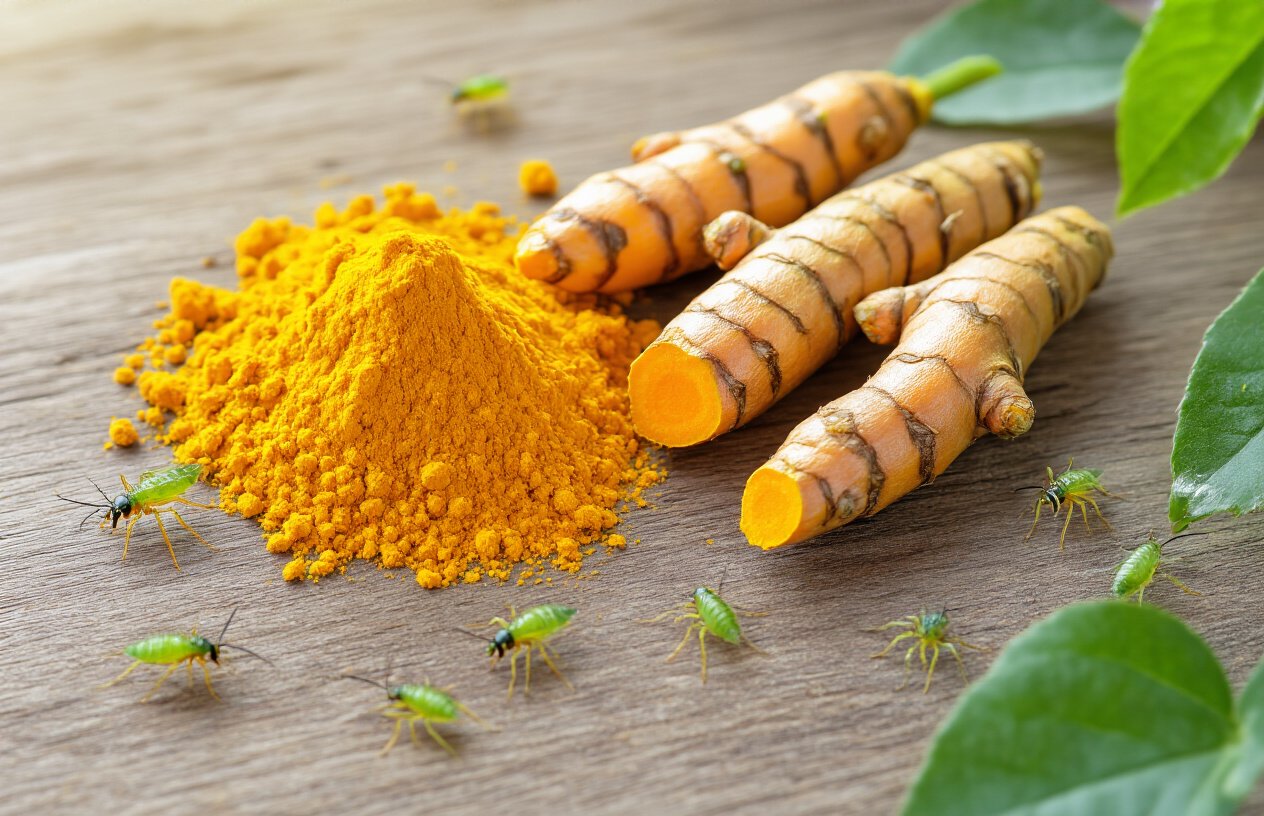
Active Compounds in Curcuma That Repel Pests
Turmeric contains several powerful bioactive compounds that make it an effective natural pesticide. The primary component responsible for pest control is curcumin, which makes up 3-5% of dried turmeric root. This golden compound disrupts insect feeding patterns and interferes with their reproductive cycles.
Beyond curcumin, turmeric contains volatile oils like ar-turmerone, α-turmerone, and β-turmerone. These aromatic compounds create an invisible barrier that repels many common garden pests through their strong scent. The essential oils also contain antimicrobial properties that protect plants from fungal and bacterial infections.
Turmeric’s tannins play a crucial role in pest deterrence by making plant surfaces less appealing to insects. When applied to leaves, these compounds create a bitter taste that discourages chewing insects from feeding. The combination of these natural chemicals works synergistically, making turmeric more effective than any single compound alone.
The spice also contains zingiberene and sesquiterpenes, which have proven insecticidal properties. These compounds break down slowly in sunlight, providing extended protection without harming beneficial insects or soil microorganisms.
Scientific Evidence Supporting Turmeric as Pest Control
Research from agricultural universities worldwide demonstrates turmeric’s effectiveness against various garden pests. A 2023 study published in the Journal of Pest Management showed that turmeric extract reduced aphid populations by 78% within 48 hours of application.
Laboratory tests reveal that curcumin disrupts the digestive enzymes of soft-bodied insects, making it particularly effective against:
- Aphids and whiteflies
- Spider mites
- Cucumber beetles
- Cabbage worms
- Thrips
Field trials conducted across different climate zones show consistent results. Gardens treated with turmeric solutions experienced 60-85% fewer pest-related crop losses compared to untreated control groups. The compound’s photostability means it remains active for 7-10 days under normal weather conditions.
Microscopic analysis reveals that turmeric particles create physical barriers on leaf surfaces, preventing small insects from establishing feeding sites. This mechanical action complements the chemical deterrent effects, providing dual-action protection.
Environmental Benefits Over Chemical Pesticides
Turmeric breaks down naturally in soil and water without creating toxic residues. Unlike synthetic pesticides that can persist for months or years, turmeric compounds decompose within 2-3 weeks, leaving no harmful trace in the environment.
The spice supports beneficial insect populations while targeting only problematic pests. Ladybugs, lacewings, and parasitic wasps remain unaffected by turmeric applications, maintaining the natural balance in your garden ecosystem. This selective action prevents the collapse of beneficial insect populations that often occurs with broad-spectrum chemical pesticides.
Soil health improves with regular turmeric applications. The compound stimulates beneficial microbial activity while suppressing harmful soil-borne pathogens. Earthworms show increased activity in turmeric-treated soil, improving soil aeration and nutrient cycling.
Water systems remain safe from contamination since turmeric doesn’t accumulate in groundwater or surface water. This makes it ideal for organic gardening and areas near sensitive water sources.
Cost Savings Compared to Commercial Alternatives
A single pound of turmeric powder costs $3-8 and creates enough solution for treating a 1,000 square foot garden multiple times throughout the season. Compare this to commercial organic pesticides that cost $15-30 per application for the same area.
| Treatment Type | Cost per Season | Coverage Area | Applications Needed |
|---|---|---|---|
| Turmeric Solution | $10-15 | 1,000 sq ft | 8-12 |
| Commercial Organic | $120-180 | 1,000 sq ft | 8-12 |
| Chemical Pesticide | $80-150 | 1,000 sq ft | 6-8 |
Bulk purchasing reduces costs even further. Buying turmeric in 5-10 pound quantities from restaurant supply stores or ethnic markets can cut expenses by 40-60%. The powder stores well for up to two years when kept in airtight containers away from light.
Home gardeners save additional money by avoiding application fees charged by pest control services. A single professional treatment often costs $100-200, while an entire season of turmeric applications costs less than $20 for most home gardens.
The dual-purpose nature of turmeric adds value since leftover powder serves culinary purposes. This eliminates waste and maximizes the return on your investment, making it the most economical pest control option available.
Common Garden Pests That Turmeric Effectively Controls
Aphids and Soft-Bodied Insects
Turmeric works exceptionally well against aphids, those tiny green or black bugs that cluster on new growth and leaves. The curcumin compound in turmeric disrupts their feeding patterns and creates an inhospitable environment on plant surfaces. Aphids hate the bitter taste and strong aroma, often abandoning treated plants within hours of application.
Soft-bodied insects like scale insects, mealybugs, and whiteflies also respond poorly to turmeric treatments. These pests rely on their ability to pierce plant tissue and extract nutrients, but turmeric creates a protective barrier that makes feeding difficult. The natural oils in turmeric can also suffocate smaller insects when applied as a fine spray.
| Pest Type | Response Time | Effectiveness Rate | Recommended Concentration |
|---|---|---|---|
| Aphids | 2-6 hours | 85-95% | 1 tsp per cup water |
| Scale insects | 24-48 hours | 70-80% | 1.5 tsp per cup water |
| Mealybugs | 12-24 hours | 75-85% | 1 tsp per cup water |
| Whiteflies | 4-8 hours | 80-90% | 1 tsp per cup water |
Spider mites, though not insects, also struggle with turmeric-treated surfaces. The spice disrupts their web-building abilities and makes leaves less appealing for egg-laying.
Ants and Crawling Pests
Ants absolutely despise turmeric’s strong scent and bitter compounds. Sprinkling dry turmeric powder around ant trails, entry points, and garden borders creates an effective barrier that most ant species won’t cross. The spice interferes with their scent trails, making navigation difficult and discouraging colony expansion into treated areas.
Slugs and snails show similar aversion to turmeric barriers. The powder irritates their soft bodies and creates an unpleasant texture they prefer to avoid. Creating rings of turmeric around vulnerable plants like hostas, lettuce, and seedlings provides reliable protection during peak slug season.
Crawling beetles and caterpillars also find turmeric-treated surfaces unpalatable. While the effect isn’t as dramatic as with ants, many species will seek alternative food sources rather than consume turmeric-coated foliage. This works particularly well for:
- Cucumber beetles on cucurbit crops
- Flea beetles on brassicas
- Small caterpillars on herb gardens
- Earwigs seeking shelter in mulched areas
Ground application around plant bases creates protective zones that most crawling pests actively avoid.
Fungal Diseases and Root Rot Prevention
Turmeric’s antifungal properties make it a powerful ally against common garden diseases. The curcumin compound naturally inhibits fungal growth and spore development, helping prevent issues before they become serious problems.
Powdery mildew, that white dusty coating on leaves, responds well to regular turmeric spray applications. The antifungal action disrupts spore germination and creates an environment where existing fungal colonies struggle to expand. Zucchini, cucumbers, and roses benefit tremendously from preventive turmeric treatments during humid conditions.
Root rot prevention becomes possible when turmeric powder gets mixed into planting soil or compost. The natural antimicrobial properties help maintain healthier soil conditions around root systems. This proves especially valuable for:
- Tomato plants prone to verticillium wilt
- Peppers in heavy clay soils
- Container plants with drainage issues
- Seedlings in humid greenhouse conditions
Black spot on roses, leaf spot diseases on vegetables, and damping-off in seedlings all show reduced severity with consistent turmeric applications. The key lies in starting treatments early, before visible symptoms appear, as prevention works far better than attempting to cure established infections.
Preparing Turmeric-Based Pesticide Solutions
Basic Turmeric Powder Spray Recipe
Creating a simple turmeric pesticide spray requires just a few kitchen staples. Mix 2 tablespoons of organic turmeric powder with 1 gallon of warm water in a clean container. Add 1 teaspoon of liquid dish soap to help the mixture stick to plant surfaces and improve absorption. Stir the solution thoroughly, ensuring no clumps remain. The warm water helps dissolve the turmeric more effectively than cold water, creating a smoother consistency.
Strain the mixture through a fine mesh or cheesecloth to prevent clogging your spray equipment. The resulting golden liquid should have a vibrant yellow color and mild earthy aroma. For smaller batches, use 1 tablespoon of turmeric powder per quart of water with ½ teaspoon of soap. This basic recipe works well for general pest control and serves as the foundation for more complex formulations.
Enhanced Formulations with Complementary Ingredients
Boosting your turmeric spray’s effectiveness comes from combining it with other natural pest-fighting ingredients. Adding 2 cloves of minced garlic per gallon creates a powerful deterrent against aphids and soft-bodied insects. The sulfur compounds in garlic work synergistically with turmeric’s curcumin to create a hostile environment for pests.
Neem oil makes another excellent addition at 1 tablespoon per gallon of turmeric solution. This combination targets both feeding insects and fungal issues that often accompany pest infestations. For spider mite problems, incorporate 1 tablespoon of cayenne pepper powder to create heat-based deterrence.
Essential oils can amplify your spray’s potency. Add 10-15 drops of peppermint, rosemary, or thyme oil per gallon. These oils contain compounds that confuse pest navigation systems while adding pleasant aromas to your garden. Baking soda at 1 teaspoon per gallon helps stabilize pH levels and provides additional fungal protection.
| Enhancement | Amount per Gallon | Target Pests | Additional Benefits |
|---|---|---|---|
| Garlic | 2 cloves, minced | Aphids, thrips | Antibacterial properties |
| Neem oil | 1 tablespoon | Multiple insects | Fungal prevention |
| Cayenne pepper | 1 tablespoon | Spider mites, mammals | Heat deterrent |
| Essential oils | 10-15 drops | Flying insects | Pleasant fragrance |
Proper Mixing Ratios for Maximum Effectiveness
The concentration of your turmeric solution directly impacts its pest-control effectiveness. For light infestations or preventive treatments, use a 1:500 ratio (2 tablespoons turmeric per gallon of water). This mild concentration won’t stress plants while providing baseline protection against common garden pests.
Medium infestations require stronger solutions at a 1:250 ratio (4 tablespoons per gallon). This concentration effectively controls established pest populations without causing leaf burn on most plants. Heavy infestations may need a 1:125 ratio (8 tablespoons per gallon), but test this strength on a small area first.
Adjust ratios based on plant sensitivity. Tender seedlings and delicate flowers need weaker solutions, while established vegetables and herbs can handle stronger concentrations. Young plants should never receive more than a 1:750 ratio to prevent damage.
Consider pest life cycles when determining strength. Soft-bodied insects like aphids respond well to lighter applications, while harder-bodied beetles may require stronger formulations. Reapply lighter solutions more frequently rather than using excessive concentrations that might harm beneficial insects.
Storage Methods to Maintain Potency
Fresh turmeric solutions work best, but proper storage extends their effectiveness. Store mixed solutions in dark glass containers or opaque plastic bottles away from direct sunlight. Light breaks down curcumin, the active compound in turmeric, reducing pesticide effectiveness over time.
Refrigerate prepared solutions for up to one week. Cold temperatures slow bacterial growth and preserve active compounds. Label containers with mixing dates and discard solutions showing signs of fermentation or foul odors. Adding 1 tablespoon of white vinegar per gallon acts as a natural preservative, extending shelf life to 10 days.
For longer storage, freeze concentrated turmeric paste in ice cube trays. Mix 1 cup turmeric powder with enough water to form a thick paste, then freeze in portion-sized cubes. Each cube typically makes one quart of spray solution when diluted. Frozen cubes maintain potency for up to six months.
Dry turmeric powder stores best in airtight containers away from heat and moisture. Purchase small quantities frequently rather than bulk buying, as fresh powder contains higher curcumin levels. Store opened containers in cool, dry places and use within one year for maximum effectiveness.
Application Methods for Maximum Garden Protection
Foliar Spray Techniques for Leaves and Stems
The most effective way to deliver turmeric’s protective compounds directly to your plants is through foliar application. Mix one tablespoon of turmeric powder with a quart of warm water and add a few drops of mild liquid soap to help the solution stick to plant surfaces. Spray during early morning or late evening to avoid leaf burn and maximize absorption.
Target the undersides of leaves where many pests like aphids and spider mites congregate. Hold your sprayer 6-8 inches from the plant and use a fine mist setting to ensure even coverage without oversaturating. For climbing plants like tomatoes and beans, work systematically from bottom to top, coating both sides of each leaf cluster.
Pay special attention to new growth and tender shoots, as these areas attract the most pest activity. The natural compounds in turmeric create an invisible barrier that deters insects while supporting the plant’s natural defense mechanisms.
Soil Treatment Methods for Root Protection
Ground application creates a protective zone around your plants’ root systems. Create a soil drench by dissolving two tablespoons of turmeric in a gallon of water. Pour this mixture slowly around the base of each plant, extending out to the drip line where feeder roots are most active.
For larger garden beds, broadcast dry turmeric powder directly onto the soil surface at a rate of one teaspoon per square foot, then water thoroughly to activate the compounds. This method works particularly well for preventing root-feeding insects like cucumber beetles and root aphids.
Work turmeric into the top 2-3 inches of soil around established plants, being careful not to disturb shallow roots. The powder will gradually release its active ingredients as you water, creating long-lasting protection that benefits both soil health and pest control.
Timing Applications with Pest Life Cycles
Success with turmeric depends heavily on understanding when pests are most vulnerable. Apply treatments just before peak activity periods for maximum impact. For most common garden pests, this means starting applications in early spring when soil temperatures reach 50°F consistently.
Target specific life stages for better results:
- Aphids: Apply weekly during spring flush periods when new growth appears
- Spider mites: Increase frequency during hot, dry weather when populations explode
- Fungal diseases: Begin preventive treatments before humid conditions arrive
- Soil-dwelling pests: Apply soil treatments 2-3 weeks before typical emergence times
Monitor your local weather patterns and pest pressure reports from extension services. Many insects follow predictable seasonal patterns, and timing your turmeric applications to coincide with their vulnerable stages dramatically improves effectiveness.
Frequency Guidelines for Sustained Protection
Regular application schedules maintain consistent protection levels throughout the growing season. For foliar sprays, apply every 7-10 days during active growing periods, increasing to every 5-7 days during high pest pressure situations.
Soil treatments last longer and typically need refreshing every 3-4 weeks. However, heavy rainfall can wash away surface applications, requiring more frequent reapplication during wet seasons.
| Application Type | Normal Frequency | High Pressure | After Rain |
|---|---|---|---|
| Foliar Spray | 7-10 days | 5-7 days | Immediate |
| Soil Drench | 3-4 weeks | 2-3 weeks | 1 week |
| Dry Broadcast | 4-6 weeks | 3-4 weeks | 2 weeks |
Adjust your schedule based on plant response and pest levels. Plants showing stress or increased pest activity may benefit from more frequent applications, while healthy, established plants often need less intensive treatment schedules.
Plant-Specific Usage Guidelines
Vegetable gardens and edible crops
Turmeric works exceptionally well with most vegetables, but timing and concentration matter. For leafy greens like lettuce, spinach, and kale, use a diluted solution of 1 teaspoon turmeric powder per gallon of water. Apply this mixture in the early morning or evening to prevent leaf burn. The natural compounds in turmeric help repel aphids and caterpillars that commonly attack these crops.
Tomatoes, peppers, and eggplants benefit from stronger turmeric applications. Mix 2 tablespoons of turmeric powder with a gallon of water and add a few drops of mild dish soap for better adherence. Spray the base of plants and lower leaves where pests typically start their attack. This approach helps control hornworms, whiteflies, and spider mites.
Root vegetables like carrots, radishes, and onions respond well to soil treatment rather than foliar spraying. Mix turmeric powder directly into the soil around plants – about 1 tablespoon per square foot. This method deters underground pests like root maggots and nematodes while allowing the turmeric to break down naturally.
For climbing vegetables such as cucumbers, beans, and peas, focus on treating the stems and lower portions of the plants. These areas are entry points for many pests. Apply turmeric solution weekly during peak growing season, but reduce frequency as harvest time approaches.
Ornamental plants and flowers
Ornamental gardens require a gentler approach since aesthetic appeal is the primary goal. Roses respond beautifully to turmeric treatments, especially for controlling aphids and black spot prevention. Create a paste using 1 tablespoon turmeric powder mixed with 2 cups water and spray directly on affected areas. The golden residue washes away with rain and doesn’t stain the blooms.
Flowering perennials like marigolds, zinnias, and cosmos can handle stronger concentrations. Use 2 teaspoons turmeric per gallon of water and apply bi-weekly during blooming season. This treatment helps prevent thrips and keeps flowers looking vibrant longer.
Delicate flowers such as impatiens, begonias, and petunias need extra care. Start with a very diluted solution – just half a teaspoon per gallon – and test on a small section first. These plants have sensitive leaves that can show discoloration if the concentration is too strong.
Shrubs and bushes like azaleas, hydrangeas, and ornamental grasses benefit from soil applications rather than direct spraying. Sprinkle turmeric powder around the base of these plants and water in gently. This method provides long-lasting protection without affecting the plant’s appearance.
Indoor plants and container gardens
Container plants need special attention because they can’t escape from treatments like outdoor plants can. Start with very weak solutions – quarter teaspoon turmeric per gallon of water – and observe how plants respond over several days before increasing strength.
Houseplants like pothos, snake plants, and rubber trees typically handle turmeric well, but always test a small area first. These plants often deal with fungus gnats, and turmeric can help control larvae in the soil. Mix a small amount of turmeric powder directly into the top inch of potting soil.
Herbs grown indoors, such as basil, mint, and cilantro, benefit from light misting with turmeric solution. Keep the concentration low since you’ll be eating these plants. One-quarter teaspoon per gallon provides adequate pest control without overwhelming the delicate herb flavors.
Succulents and cacti require minimal water anyway, making them perfect candidates for dry turmeric application. Dust a tiny amount of powder around the base of these plants to deter gnats and prevent root rot. The natural antifungal properties of turmeric complement these plants’ preference for dry conditions perfectly.
Safety Considerations and Best Practices
Protecting Beneficial Insects While Targeting Pests
Turmeric-based pesticides can affect beneficial insects like bees, ladybugs, and lacewings, so timing your applications matters. Apply treatments early morning or late evening when pollinators are less active. Avoid spraying directly on flowering plants that attract beneficial insects, focusing instead on foliage and soil areas where target pests congregate.
Create refuge zones in your garden by leaving some untreated plants nearby. These safe spaces allow beneficial insects to escape treated areas and return once the turmeric solution dries. Consider alternating treatment schedules – treat half your garden one week and the other half the following week to maintain population balance.
Monitor beneficial insect activity before and after applications. If you notice a significant decline in helpful insects, reduce application frequency or concentration. Remember that predatory insects often return naturally within 7-10 days after treatment.
Avoiding Plant Damage From Over-Application
Turmeric’s high curcumin content can cause leaf burn when applied too frequently or in excessive concentrations. Start with diluted solutions (1 tablespoon per gallon of water) and observe plant response for 48-72 hours before increasing strength.
Young seedlings and tender plants require extra care. Test spray solutions on a small leaf section first, waiting 24 hours to check for yellowing, browning, or wilting. Plants under stress from drought, heat, or disease are more susceptible to turmeric damage.
Application frequency guidelines:
- Mature plants: Every 7-10 days maximum
- Young plants: Every 14 days maximum
- Flowering plants: Reduce concentration by 50%
- Stressed plants: Wait until recovery before treatment
Avoid applying during peak sunlight hours, as wet leaves combined with intense UV rays can cause chemical burns. Early morning or cloudy day applications work best.
Personal Protective Equipment Recommendations
Turmeric powder and concentrated solutions can cause skin staining and respiratory irritation. Wear nitrile or rubber gloves when mixing and applying solutions, as turmeric permanently stains fabric and temporarily stains skin.
Eye protection is essential when using spray applications. Turmeric particles can cause severe eye irritation and temporary vision impairment. Use safety goggles or face shields, especially during windy conditions.
Essential PPE checklist:
- Chemical-resistant gloves
- Safety goggles or face shield
- Long sleeves and pants
- Closed-toe shoes
- Dust mask for powder handling
- Apron or old clothes
Work in well-ventilated areas when mixing concentrated solutions. The fine powder can become airborne and cause respiratory irritation in sensitive individuals. Store mixed solutions in clearly labeled containers away from food preparation areas.
Pet and Child Safety Measures
While turmeric is generally safe, concentrated solutions can cause stomach upset if ingested in large quantities by pets or children. Keep pets indoors and children away from treated areas until surfaces dry completely, typically 2-4 hours depending on weather conditions.
Store turmeric powder and prepared solutions in secure, labeled containers out of reach of curious pets and children. Use child-resistant caps when possible and avoid storing in food containers that might confuse family members.
Safety timeline after application:
- Wait 2 hours minimum before allowing access
- Rinse edible plants thoroughly before harvest
- Allow 24-48 hours before pets can safely graze treated grass
- Remove water bowls from treatment areas during application
Watch for signs of accidental ingestion in pets, including vomiting, diarrhea, or excessive drooling. While turmeric toxicity is rare, contact your veterinarian if symptoms persist beyond 24 hours.
Create physical barriers around freshly treated plants using temporary fencing or garden stakes with warning flags. This prevents accidental contact while the solution remains active on plant surfaces.
Troubleshooting Common Issues
When turmeric treatments aren’t working
Sometimes your turmeric-based pesticide might not deliver the pest control results you’re expecting. The most common culprit is concentration – you might be using a solution that’s too weak to effectively deter pests. Try doubling your turmeric powder ratio and see if that makes a difference within 3-5 days.
Weather conditions can also sabotage your efforts. Rain washes away turmeric applications before they have time to work, while extreme heat can break down the active compounds. Apply treatments during calm, dry periods and reapply after heavy rainfall.
Pest resistance happens when you’ve been using the same treatment repeatedly. Some insects adapt to turmeric’s deterrent properties over time. Rotate your turmeric applications with other natural pesticides like neem oil or diatomaceous earth every two weeks to prevent this adaptation.
Storage issues often go unnoticed but matter significantly. Old turmeric loses its potency – fresh powder should have a vibrant orange color and strong aroma. If your turmeric smells musty or looks faded, replace it with a new supply.
Application timing plays a crucial role too. Many garden pests are most active during specific hours. Apply your turmeric solution in early morning or evening when target pests are feeding, rather than during midday heat when they’re hiding.
Dealing with staining on plants and surfaces
Turmeric’s beautiful golden color becomes problematic when it leaves permanent stains on your favorite garden surfaces and plant foliage. Light-colored plants, especially those with white or pale flowers, can develop unsightly yellow-orange discoloration that persists for weeks.
Prevention strategies work better than cleanup:
- Test spray a small, hidden area before full application
- Use lower concentrations on delicate or light-colored plants
- Apply during overcast conditions to reduce UV-activated staining
- Mix turmeric with kaolin clay to create a less staining formula
For fabric and synthetic surfaces:
Create a paste using baking soda and dish soap, let it sit for 15 minutes, then scrub gently. White vinegar can help break down turmeric stains on non-porous surfaces like plastic planters or garden tools.
For plant staining:
Rinse affected foliage with a mild soap solution (1 teaspoon dish soap per quart of water) followed by clear water. This works best within 24 hours of staining. Lemon juice mixed with water can help fade older stains, but test it first as citric acid can damage sensitive plants.
Garden paths and concrete surfaces need immediate attention – use a pressure washer or scrub brush with enzymatic cleaner before the stain sets permanently.
Adjusting concentrations for sensitive plants
Delicate plants require careful turmeric concentration management to avoid leaf burn or growth inhibition. Seedlings, herbs with tender leaves, and flowering plants often react poorly to standard-strength turmeric solutions.
Start with ultra-diluted concentrations:
| Plant Type | Turmeric Concentration | Water Amount |
|---|---|---|
| Seedlings | 1/4 teaspoon | 1 quart |
| Herbs (basil, cilantro) | 1/2 teaspoon | 1 quart |
| Flowering annuals | 3/4 teaspoon | 1 quart |
| Young vegetables | 1 teaspoon | 1 quart |
Signs your concentration is too strong:
- Yellowing leaf edges within 24-48 hours
- Wilting despite adequate soil moisture
- Brown spots appearing on foliage
- Stunted new growth
- Flower drop or bud failure
Recovery protocol for over-treated plants:
Immediately flush the soil around affected plants with plain water to dilute any residual turmeric. Remove damaged leaves to prevent disease and reduce plant stress. Provide temporary shade and monitor daily for improvement.
Some plants like succulents and cacti tolerate higher concentrations due to their waxy protective coating, while ferns and tropical houseplants need the gentlest approach possible. Always perform a patch test on 2-3 leaves before treating the entire plant.
Turmeric offers gardeners a powerful, natural way to protect their plants without relying on harsh chemicals. This golden spice works against many common pests while being safe for your family, pets, and beneficial garden insects. From aphids to fungal issues, turmeric-based solutions can handle a wide range of problems that typically plague home gardens.
Ready to give your garden the natural protection it deserves? Start with a simple turmeric spray using the recipes and methods outlined above. Remember to test on a small area first, apply during cooler parts of the day, and be patient as natural solutions often take a bit longer to show results. Your plants will thank you for choosing this eco-friendly approach, and you’ll enjoy peace of mind knowing your garden is free from synthetic pesticides.


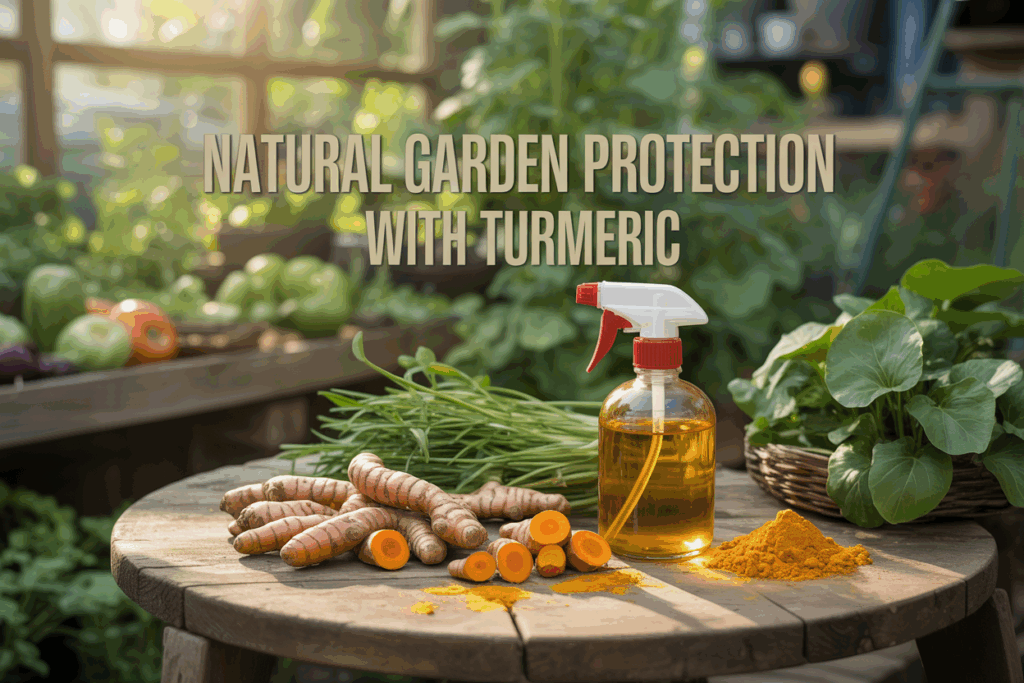
 Hyperbolic Stretching 4.0
$ 47,00
Hyperbolic Stretching 4.0
$ 47,00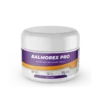 Balmorex Pro
$ 79,00
Balmorex Pro
$ 79,00 Unlock Your Glutes
$ 17,00
Unlock Your Glutes
$ 17,00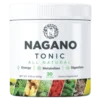 Nagano Tonic
$ 79,00
Nagano Tonic
$ 79,00 Pineal Guardian X
$ 69,00
Pineal Guardian X
$ 69,00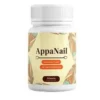 Appanail
$ 79,00
Appanail
$ 79,00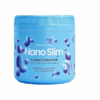 Nano Slim 11400 HUF
$ 42,00
Nano Slim 11400 HUF
$ 42,00 Mitolyn
$ 79,00
Mitolyn
$ 79,00